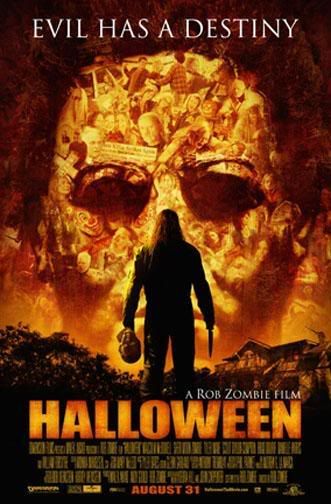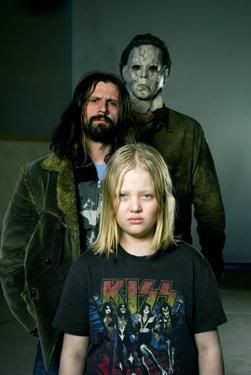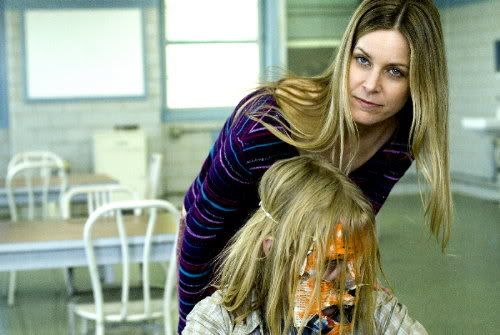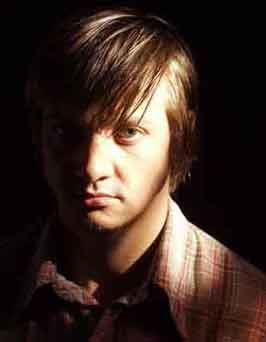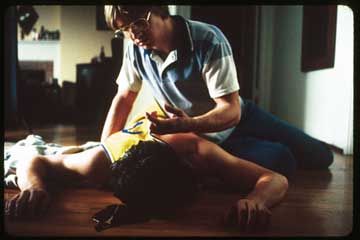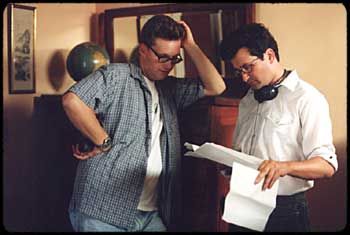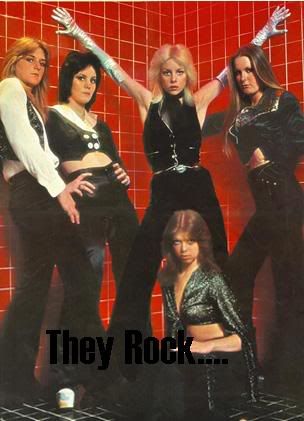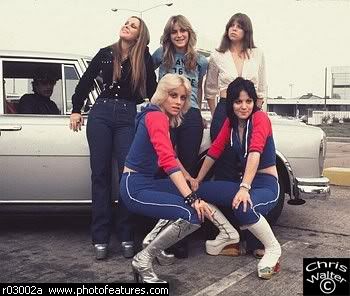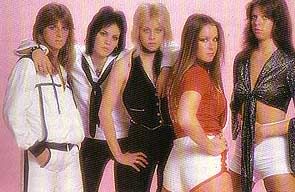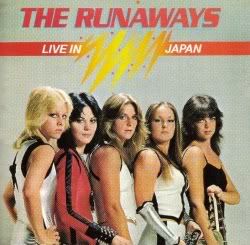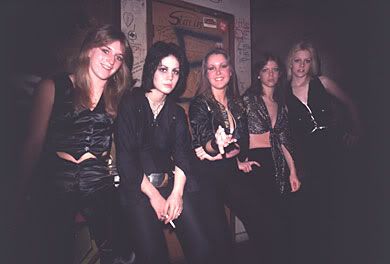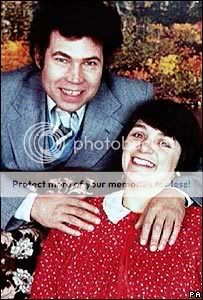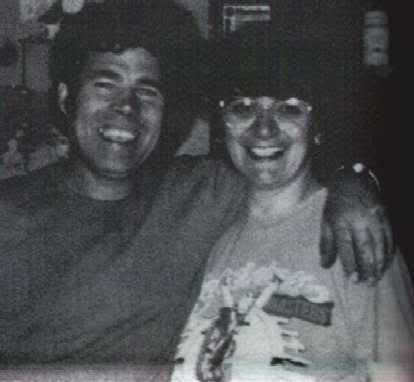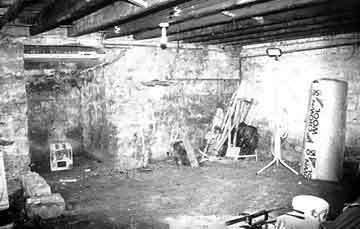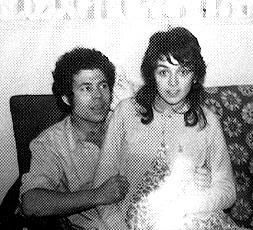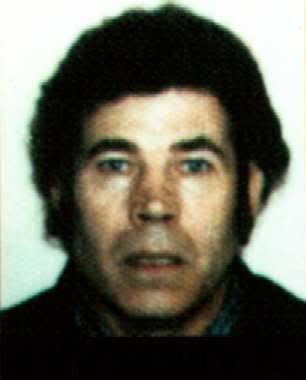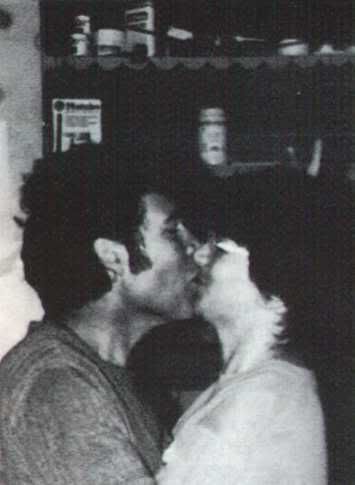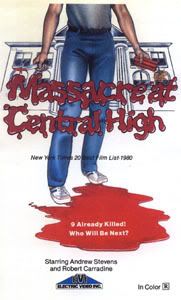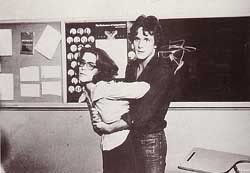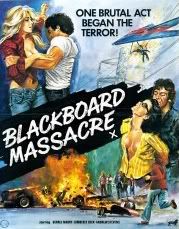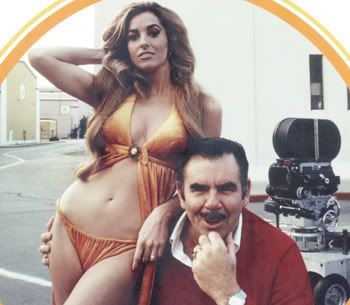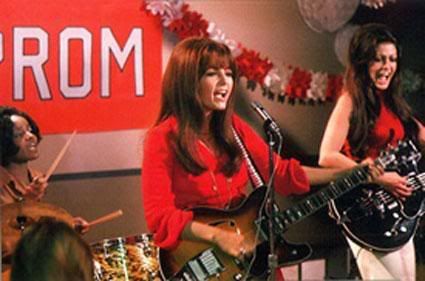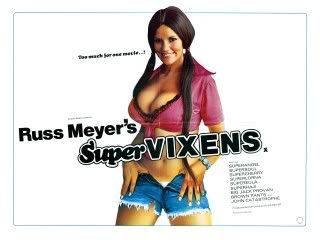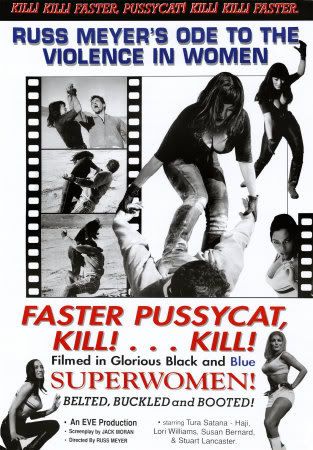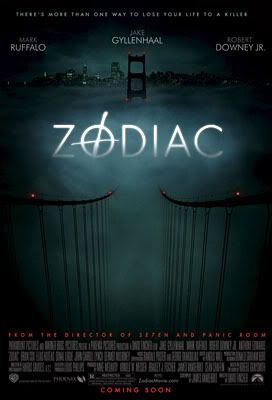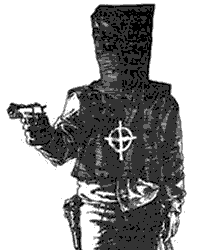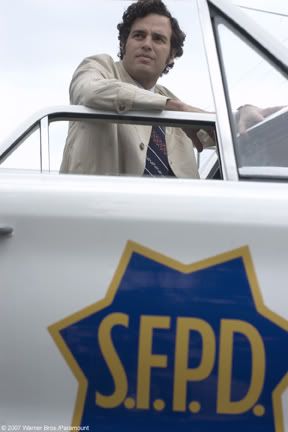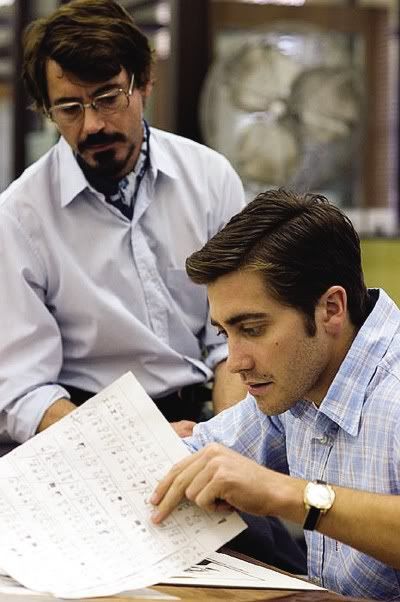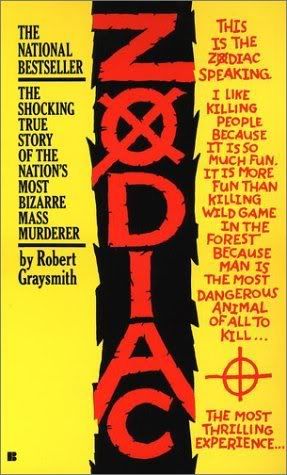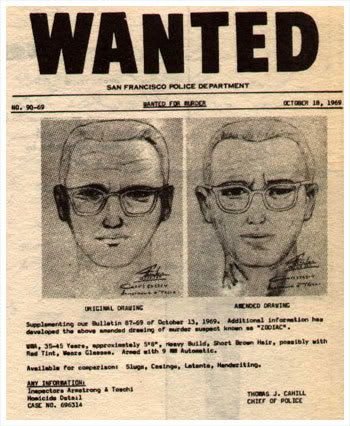The video which Author Geoffrey Wansell refers to in the above excerpt from his engrossing study on the life and crimes of serial killer Fred West is Kilroy Was Here, a very grotty and brutal 17 minute short made in Europe in the mid-1970s by H.O.M Productions.
The film, shot without dialogue, has a young woman tied and gagged in a low-rent, dirty room, where she is subsequently raped by two lecherous men who let mice crawl all over her body before making them run up a plastic tube that has been inserted into her. The men also have sex with each other, before leaving the girl tied up with a lit cigarette inserted into her vagina.
Despite being extremely disturbing and violent, Kilroy Was Here was legitimately available from European mail-order sources, both as an 8mm short in the 1970s, and as part of a compilation video released by Videorama in the 1980s.
Although it wasn't one of their productions, Kilroy Was Here is the type of XXX loop which may not have existed were it not for the pioneering efforts of Color Climax, a Danish company who throughout the 1970s continually set new benchmarks in terms of confronting, kinky pornography. Living by their company motto as "The First, the Biggest, the most Pornographic", Color Climax did produce a great deal of straight sex material, but it was their scat, rape, fetish and animal titles - along with stints producing films and magazines featuring John Holmes and the child-like Tiny Tove - which helped gain the company their notoriety.
There was always something intrinsically unique with the material produced by Color Climax, something that made you feel all the more dirty for having watched or looked at it. Even as a teenaged kid, when a classmate had bought an old Color Climax magazine to school which he had procured from his older brother's bedroom, I was aware - if nobody else around me was - that this was different from other pornography that I had so far been exposed to. It was grimy and grungy (though that word had yet to enter my vocabulary), and there always seemed to be an element of danger and darkness about them.
Perhaps it was my naivete which read all of this into them, but even years later, when I first began to track down the filmed output produced by Color Climax, I was once again struck by just how unique they were. Even when watching one of their seemingly ordinary straight sex film loops, I would always sense that - knowing the company and their reputation - the events I was watching could suddenly take a sharp turn and descend into something totally bizarre and surreal. Even accidental moments helped perpetuate the image of Color Climax as taboo breakers always in search of that next level (a prime case in point here is their short Deep Throat Drinker, in which a man climaxes inside a girl's mouth, with the bulk of his come shooting out through her nose - this completely unexpected moment, coupled with the look of surprise and utter revulsion on the girl's face - transforms the film from just another porn loop into the realm of the grotesque).
A Brief History of Color Climax:
Established by Danish brothers Peter and Jens in 1966, the early Color Climax material was produced surreptitiously, with the pair operating from secret warehouses, using false names and shady printers to put their material together.
The legalisation of pornography in Denmark the following year took a lot of the heat off Color Climax's operations, and the company was well prepared to capitalise on this new found freedom, producing print and film material to eagerly feed not only the local population, but also the masses of tourist and curiosity seekers who were flooding to cities like Copenhagen to soak in the liberated atmosphere and purchase material which was only available in their own countries by illicit means.
In this atmosphere Color Climax thrived, with their self-titled magazine become Denmark's highest selling sex publication. Initially published in black & white, Color Climax switched to all colour in the early 1970s - beginning with issue number 86 - and began to incorporate accompanying text, printed in three different languages (a popular move which other porn manufacturers began to emulate, as it increased the publication's popularity in other countries, and also negated the necessity for expensive reprints in other languages).
No doubt one of the prime reasons for the success and longevity of Color Climax was their refusal to be pigeonholed - the company would obligingly provide material that catered to all tastes and proclivities (provided their was guaranteed profit in it, of course). Kinky material was always in demand, from urination and defecation to bestiality and implied child porn to freak show-like bizarrism, such as the appearance of 'Long Dong' Silver in Color Climax issue 120 - a tall, skinny black man whose cock was so long it could be tied into a knot (although he was unable to attain an erection). Bill 'The Bull' was another well-endowed black man who found momentary fame appearing in Color Climax films and magazines.
As Color Climax became more safe and respectable and throughout the 1980s - with many top Hollywood porn starlets travelling to Europe to work for them - their work began to appear less and less unique. Now one of the leaders in internet based pornography, Color Climax claim to have sold a staggering 140 million publications, over a million video cassettes and more than eight million 8mm film shorts during their near-forty year history.
The Films:
Many of the extreme shorts produced by Color Climax during the 1970s received new life during the 1980s, when they were compiled onto a series of best-selling video cassettes. Still popular and sought after, many of these video compilations are still legitimately available from several European sources (including online via www.eurosex.nl - although good luck trying to get them past customs officials).
While not complete (a nearly impossible task given the way these films have been re-edited and re-titled over the years), the filmography which follows presents a brief rundown of some of the more notorious titles from the Color Climax archives, along with video availability where known. Although specific production dates are hard to pin down, the majority of these titles were produced between 1972 - 1979. Unless otherwise noted, individual loops had a running time of approximately eight minutes. Serial numbers noted after film titles are taken from the original 8mm boxes which the films were packaged and sold in.
A note on languages: Naturally, the original Color Climax films featured Dutch dialogue. Films that were exported for overseas sales would have either subtitles added, or would be dubbed over in English, employing very forced and often amusing British accents.
ABDUCTED TEENAGER (CC Film No. 1281): Extremely violent short has young girl being abducted and raped (including anally) by three men.
ALWAYS PREPARED: Color Climax come dangerously close to paedophilia with this film, which features Tiny Tove as a girl scout in pigtails, done up so that she barely looks twelve. Tove and another girl scout (who also looks quite young) are seduced by a bearded man in his funky apartment when the girls go door knocking to sell raffle tickets. A second man also arrives at the apartment half way through the film to join the action. (Included on Teenage Bestsellers Programme No. 252)
ANIMAL BIZARRE: An infamous short which features Bodil Jensen in a lounge room, masturbating a huge horse then collecting its semen in a rubber sock, which she then proceeds to empty out over her face and chest, staring blankly into the camera with haunting eyes as she rubs the substance over her body. (Included on Color Climax Video Programme No. 282)
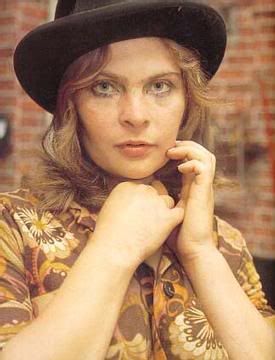
Above: Bodil Jensen
ANIMAL CLIMAX: This video release compiles three shorts featuring Bodil, all taking place in the same barn. The first two scenes have Bodil and a blonde girlfriend taking on a pony and a pig (most of the animal interaction is performed by Bodil, while her companion watches on an masturbates). The third and most scandalous sequence has Bodil and a new female companion dressed as nuns (increasing its already potent shock value), taking refuge from a storm inside the barn, where the ensuing lesbianism quickly gives way to bestiality with a gray pony (a tabby cat also appears on the scene, although it is thankfully spared anything worse - on screen at least - than being rubbed up against a bare breast). Some very inappropriate country/rock guitar music is used as the soundtrack to this third sequence (think Dr. Hook without the lyrics), and the frequent flash of camera light bulbs (still photos being taken for print magazines) provides a curious intrusion on the action, jolting the viewer away from any illusion they may harbour that those two women are actually all alone with those animals in that barn. (25 mins approx.)
ANIMAL GROTESQUE (CC Film No. 1267): Same actors from Animal Passion.
ANIMAL LOVE (CC Film No. 1263): One girl, a dog and a boar.
ANIMAL ORGY (CC Film No. 1307): Another Bodil adventure, although this time she shares the limelight with not one but three other girls - Bodil and her companion seduce a shetland pony while two (much younger looking) girls entertain themselves in another part of the field with a dog. (Included on Color Climax Video Programme No. 282)
ANIMAL PASSION: One of the more disturbing bestiality films produced by Color Climax, this film has also appeared on some video sources under the title Old MacDonald's Farm. The film features a very inbred looking, elderly farmer who returns the homestead early one day to find his wife having sex with the family dog. "Caught you! I thought I'd told you to stop doing that!", the farmer exclaims, before her drags his wife into the barn to demonstrate why he prefers "pig fucking" - this obscene man then licks and fingers the pig's genitals, before masturbating over it than having intercourse with the animal (he sits on a small wooden stool to help him). When he leaves, the wife resumes her session with the dog, then urinates on and has sex with her husbands beloved pig.
BEATEN AND BUGGERED: This is the type of violent rape fantasy which the relaxing of Denmark's pornography laws opened the doors for in the 1970s. A gang of horrid bikers kidnap two girls whose car has broken down. They are taken back to their headquarters (replete with Nazi flag and a noose hanging from the ceiling!) where they have their clothes cut off from them with a knife (which is waved menacingly between their legs), then forced to sit in a bathtub as they are urinated on, are whipped across the backside, raped and have acupuncture needles stuck into their breasts. (Included on Color Climax Video No. 291)
BIKE GANG BALL: Routine sex short (at least by Color Climax standards), but worth noting because of its aping of the classic motorcycle films of the 1960s and early-70s, as two greasy, denim clad bikers and their dolls get in on while astride their choppers in the gang's clubhouse. (Included on Teenage Bestsellers Programme No. 252)
BIZARRE TASTES (CC Film No. 1305): One of Color Climax's more extreme non-bestiality shorts, featuring masochism, urination and defecation between two girls and one guy.
BLACK IS BIGGER (CC Film No. 1320): John Holmes loop, also featuring two girls and black man.
CHICKEN LOVER: Bodil appears in this very unpleasant short as a farm woman who forces the postman to have sex with a chicken. The film is made even more distressing by the way the camera follows the poor animal as it staggers around the barn, blood dripping from its genital area.
DEBASED DOLLY: Another realistic and disturbing rape film, Debased Dolly has a young female hitchhiker being abducted by two sleazebags, tied to a chair and given an enema, then raped and forced to swallow the red enema solution (which is forced down her throat via a plastic funnel). (Included on Color Climax Video No. 291)
DOG FUCKERS: Two young women - a red haired and a brunette - ride their bikes through the countryside. They stop for a rest and immediately launch into some lesbian action, before being joined by a collie - "It's just what I need, it's a really exciting turn-on". (Included on Color Climax Video Programme No. 281)
DOG LOVERS (CC Film No. 1285): Two girls, one man and a dog.
GOLDEN PARTY Golden shower sex loop from 1979 starring Tiny Tove. Was also featured as a photo layout in Sex Bizarre 25, published in April of that year.
HER BIGGEST DAY (CC Film No. 1324): John Holmes stars in this loop, alongside two girls and another man.
THE HORNY DOG (CC Film No. 1264): Three girls and one dog, also features lesbianism.
HORSE LOVERS: Bodil and her female companion help two horses to copulate, before bringing a bringing a white shetland pony into a barn. (Included on Color Climax Video Programme No. 281)
HORSE POWER (CC Film No. 1272): A continuation of Horse Lovers, this also features Bodil and her same companion, along with the same shetland pony, the only variation being a collie who wanders into the barn to join the trio. (Included on Color Climax Video Programme No. 281)
INCESTUOUS LOVE (CC Film No. 1274): One girl plus two men.
NAKED LUNCH (CC Film No. 1337): Typically grimy but fairly routine straight sex loop featuring two girls and two men, but one has to wonder if the film was deliberately titled after the William Burrough's novel.
PARTY PISSING (CC Film No. 1339): Two girls and two men.
PEE PLEASURES (CC Film No. 1319): Two girls and one man.
PERVERTED PUNISHMENT (CC Film No. 1340): Two women and one man.
PISS ORGY (CC Film No. 1301): Two girls and two men.
PISS PARTY (CC Film No. 1308): Four girls and one very drenched guy.
RAPE
(CC Film No. 1628): Features one girl being abused by three men.
RAPED AND ABUSED: A bitter newly-divorced man seeks revenge on his ex-wife by hiring five construction workers to "fuck her into fragments". They abduct the woman and drag her into the construction lot, where they rape her until she collapses into unconsciousness on the ground. The film finishes with the five men urinating all over the woman. (Included on Color Climax Video No. 291)
SATISFIED MASOCHIST (CC Film No. 1265): Two girls and one man.
SECRET SPANKING CULT (CC Film No. 1262): Two girls and three men.
SEX AVENGERS (CC Film No. 1309): Violent rape short featuring two girls being attacked and abused by four men.
SEXY PISS STORY (CC Film No. 1330): Two girls and two guys.
SHITHOUSE PEEPER (CC Film No. 1275): A male watches two girls going to the toilet before being urinated and defecated on.
SNAKE FUCKERS (CC Film No. 1276): It's actually eels which are the object of affection in this rather repulsive loop, which starts out with two trendily dressed women wandering the streets on a shopping spree. Returning home to their flat with some live eels they've picked up at the market, the women begin to bloodily cut the creatures up in the kitchen, then start to indulge in some lesbianism, the last live eel being utilised as a sex aid (shots of the dead eels cooking in the fry pan are intercut with the sex sequence). The girls then serve the cooked eels up to their male dinner guest, before a threesome quickly ensues (he wonders what has gotten the girls so worked up).
A TASTE OF PISS (CC Film No. 1345): Two girls and two guys.
TOILET ORGY (CC Film No. 1282): Features two girls and one man.
TORTURE CHAMBER (CC Film No. 1342): Disturbing and extreme loop featuring a woman being tied up and abused by two men.
VIDEORAMA COMPILATION (Title Unknown): This compilation features a number of different bestiality segments, some of which seem to have originated from the Color Climax studios. Included are segments of a man having sex with a cow and a chicken, after which his girlfriend performs fellatio on him (both are wearing disguises), a menage a trois featuring a young man, his girlfriend, and their doberman (man and animal perform simultaneous cunnilligus on the woman), and a fairly nauseating segment featuring eels (after being used as sexual implements, one of the eels is placed into a plastic bowl, defecated on by a woman, then thrown into a frying pan). The dialogue throughout the segments has been completely over dubbed by a soundtrack that is a strange mixture of silent film-era pianola and surreal sound effects, including what seems like the sound of children playing. (28 mins approx.)
WILD ABOUT HORSES (CC Film No. 1313): Four girls, one horse and a dog.
John Holmes:

John Holmes was already a big name in American adult entertainment when - in 1975 - Color Climax purchased the European rights to 35 of Holmes' US films. The move not only helped spread Holmes' reputation across Europe, but also proved to be a financial goldmine for Color Climax, who made more money out of Holmes than they did out of any other single model, male or female. According to the company, one their Super 8 loops featuring Holmes (released on the Expo label as Film No. 51), sold an astounding 80,000 copies, and later enjoyed video success also, with its inclusion on the Color Climax compilation Bestsellers Video No. 243.
The success which Color Climax enjoyed with their John Holmes distribution deal led to the company flying Holmes into Copenhagen in 1976 to star in six of their own film productions, which he filmed in a ten day period, and which again remain perennial bestsellers for the company on video and DVD.
Tiny Tove:

While John Holmes was the most prominent established porn star to appear in Color Climax loops, their biggest female name was without doubt Tiny Tove, so dubbed because her small frame and underdeveloped breast made her appear much younger than she actually was (always a goldmine for porn producers). As a result, Tove was often cast by Color Climax in the role of naive schoolgirl or curious younger sister, being seduced (never without too much trouble) by her onscreen sibling's boyfriends, or by much older men whom she gets trapped with whilst travelling from door door indulging in wholesome activities like selling cookies to raise funds for her school.
Not a lot is known about Tove - some sources claim that she was following in the footsteps of her mother, who spent time in jail during the early 1960s for appearing in stag films. During the mid to late-1970s, Tove became the focus of Color Climax's Teenage Sex series of magazines and films, at least one of which (Golden Party) showed her both urinating and being urinated on.
Much like her formative years, little is known about Tiny Tove's life or career after she disappeared from the porn scene in the early-1980s. Perhaps once she began to look of legal age she quickly outlived her usefulness, in a ruthless business not known for its sense of loyalty or nostalgia.
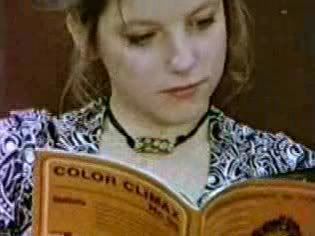
Recommended Reading:
A Report on Denmark's Legalized Pornography by Gordon Schindler, Editor (1969 Banner Books/USA)
Copyright John Harrison 2007
Note:
the above piece is part of a planned larger work to be eventually included in an upcoming book on the extremes of adult entertainment. As usual, I do not sell or know where to purchase the videos listed in this research, I can only suggest you search through online retailers based in Europe.

